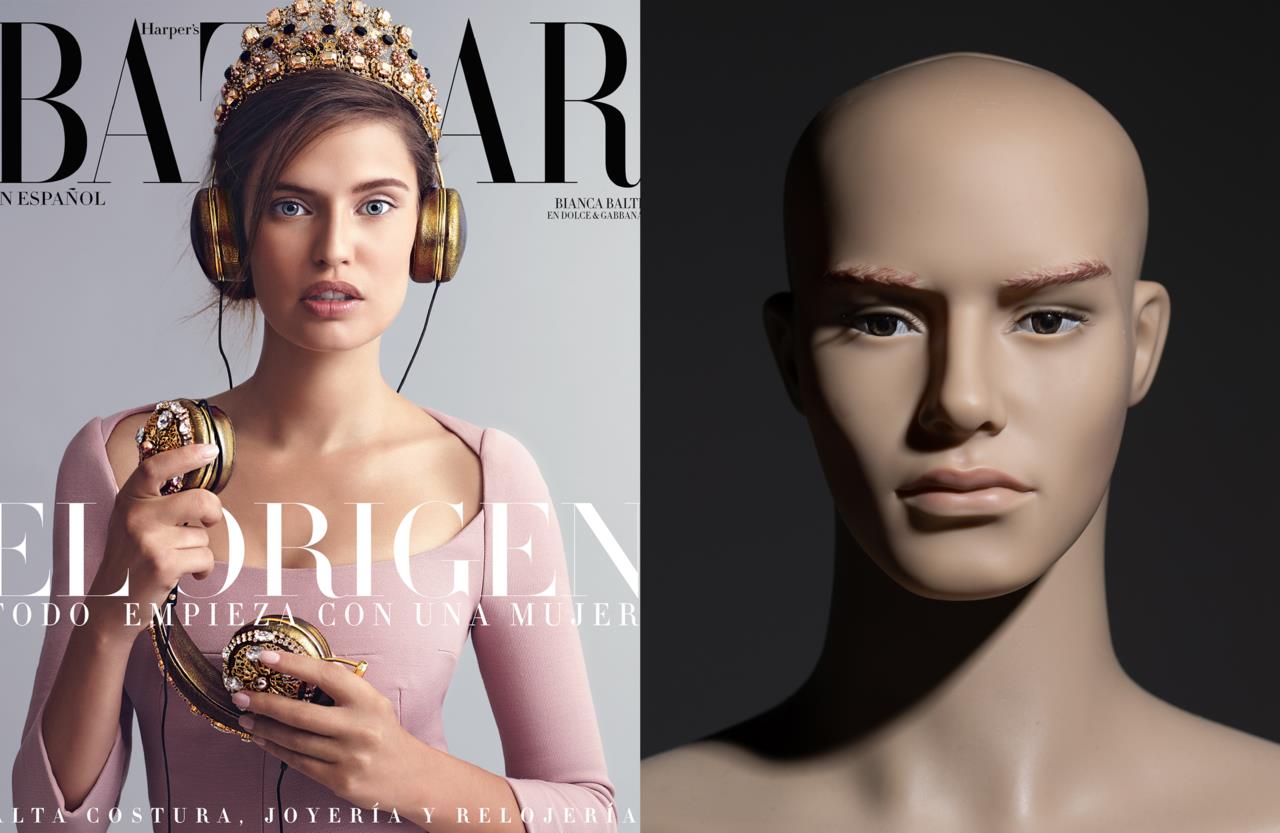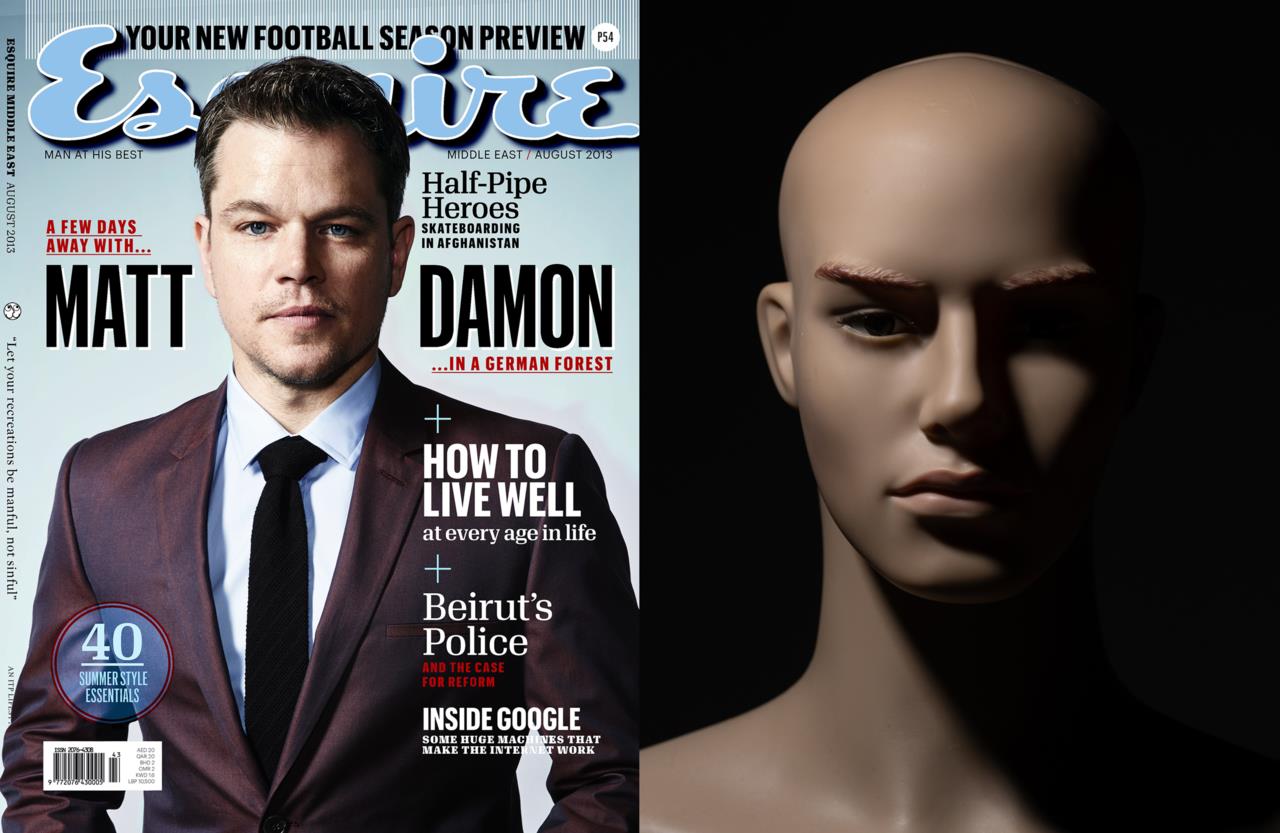John Russo has spent more than 20 years as a photographer to the stars. During this time, he has perfected his approach to light and his ability to connect with people. The alignment of these two elements of his work has culminated in stunning celebrity portraits. For John, the ultimate reward “is knowing the images I take will have social immortality.”
Timeless classics
John’s love for taking pictures stems from his childhood, when he would watch his father take photos of the family and saw how passionate he was about his work. As he grew older, he was intrigued by the world of photography and the great photographers who inhabited it. The work of Herb Ritts, Bruce Weber and other portrait photographers piqued his thirst for knowledge. By trying to emulate their portraits, he sought to elevate himself to their level.
It worked. John has created his own brand of portrait photography that he describes as “clean, classic and timeless.” His images are cutting-edge and innovative. And, beating to his own drum, he “embraces a style that can stand the test of time.”
Authentic self
All of John’s portraits have an authenticity to them. Making people feel comfortable in front of the camera brings out their best and reveals their authentic self. Over time, John has learned to give just enough direction to his subjects, guiding them with his soft, melodic voice as well as communicating with his hands and eyes. He is 100% invested in the moment of the shot and the person in front of him.
Before an assignment, John’s team pulls up a history of shoots of their subject to see what worked, what did not and where to take the mood board. They research their life, projects and passions. John also includes the talent in the direction of the shoot, so they are prepared and feel they have some ownership of the creative process.


Portrait light
The next step in this process is to decide on a lighting pattern. To achieve different lighting patterns and to shape light into different moods for his portraits, John uses a wide variety of Profoto modifiers. John’s timeless style and cutting-edge frame of mind are a perfect match for Profoto, focusing on quality of light and innovation. He has used Profoto since starting out as a photographer and emphasizes that “they never let me down.”
“Lots of variables come into play during shoots,” explains John. When deciding on the light pattern, he considers the location and mood, as well as the gender, age and skin tone of his subject. It could be light and bright to promote a comedy or moodier lighting for a dramatic or darker project.

John also wants a subject’s personality to shine through in a portrait, and his choice of light pattern is part of this process. Shaping the light helps to shape the story of the person in front of the camera – to draw out and highlight their character – and is key to the compelling people portraits for which he is known.




Patterns of light
John set up his shoot of Zach and Cara with a Profoto D2 and a Profoto Umbrella Deep Silver M, with a diffuser as the key light. As a fill light, he used another D2 with a Profoto Softbox Octa 5’. The beauty of this setup was that he didn’t have to change the light when he adjusted the lighting pattern; he just moved the subject.

John chose short light for his portrait of Zach. The characteristics of short light – a very popular cinematic lighting pattern due to the very natural feel of the lighting angle – is that the shadowed side of the face is closest to the camera. It puts more of the face in shadow and it sculpts and adds texture to the face. John chose it because it was a great way to accentuate Zach’s features.


To shoot Cara, a seasoned model, John chose broad lighting where the lit side of the face is closest to the camera. This lighting pattern illuminates a larger part of the face. In this case, John felt that it brought out Cara’s strong face and beautiful jawline and that it emphasized her striking eyes.



Inspiring others
One of the most rewarding parts of John’s job is inspiring others, just like his father inspired him. His father’s passion for his own work ignited a spark in John that he wants to pass on to emerging photographers.
At the same time as inspiring others, John wants to evolve himself. His creative and communicative spirit, combined with the ease of use and power of Profoto, challenges him to constantly up his game. Using the right light, he shows his subjects in their best light. Every portrait he takes serves to tell a story, and this narrative makes the onlooker curious to know more about what lies behind the picture.
Classic covers
Short light
Short light is when the side of the face that is further from the camera receives the main light and the side of the face closest to the camera gets less light. For this cover portrait of actor Kate Beckinsale, John picked a short lighting pattern because he found it to be more flattering to the shape of her face.

Broad light
Broad light is when the side of the face turning towards the camera gets the most light. John chose broad lighting for actor Ben Affleck to accentuate his masculine features.

Split light
This portrait of actor and director Tim Roth illustrates a split light pattern. John used a split light because he thought the overall concept called for a more dramatic light pattern. As the name implies, this light pattern splits the face into equal halves, with one side in the light and the other in shadow. It is often used to create dramatic imagery, such as a portrait of a musician or an artist.

Loop light
The loop lighting pattern illuminates the subject at an approximately 45 degree angle in front of and above the subject. This creates a nose shadow that "loops" down at an angle onto the subject's cheek. It is slightly directional since the light is not flat, but most of the face is still in the light. For this cover shot of Bianca Balti for Harper’s Bazaar, John decided on open loop lighting, simply because he thought her gorgeous face called for this lighting pattern.

Rembrandt light
Rembrandt lighting was named after the great master, who often used it in his own portraits. The aim is to create a small inverted triangle of light on the subject’s cheek that is opposite the light source. It is a simple yet dramatic light pattern. This shot of actor Matt Damon uses a Rembrandt light. John loves this lighting pattern, and Matt’s face is a perfect fit for this.

Butterfly light
Butterfly light is named after the butterfly-shaped shadow that appears under the nose when the main light source is placed above and directly behind the camera. The photographer shoots underneath the light source. This lighting pattern is often used for fashion shots but is also a good choice for older subjects who want to disguise any wrinkles. For this fashion cover of Harper’s Bazaar, John preferred a butterfly lighting pattern to achieve the effect that the fashion editor wanted him to create.

Videographer: Tas Limur
BTS photographer: Justin Miller


